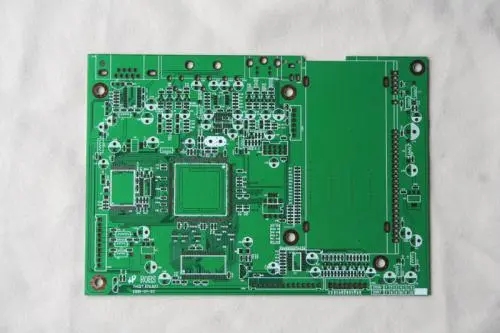Common drilling holes for PCBs in PCB circuit board factories: through holes, blind holes, and buried holes. The meaning and characteristics of these three kinds of holes.

1 Via (VIA), this is a common hole used to conduct or connect copper foil lines between conductive patterns in different layers of the circuit board. For example (such as blind holes, buried holes), but can not insert component leads or copper-plated holes of other reinforced materials.
Because the PCB is formed by the accumulation of many copper foil layers, each layer of copper foil will be covered with an insulating layer, so that the copper foil layers cannot communicate with each other, and the signal link depends on the via hole. (Via), so there is the title of Chinese via. The characteristic is: in order to meet the needs of customers, the through holes of the PCB circuit boardmust be filled with holes. In this way, in the process of changing the traditional aluminum plug hole process, white mesh is used to complete the solder mask and plug holes on the circuit board to make the production stable. The quality is reliable and the application is more perfect. Vias mainly play the role of interconnection and conduction of circuits. With the rapid development of the electronics industry, higher requirements are also placed on the process and surface mount technology of printed circuit boards.
032.jpg
The process of plugging via holes is applied, and the following requirements should be met at the same time:
1. There is copper in the via hole, and the solder mask can be plugged or not plugged.
2. There must be tin and lead in the through hole, and there must be a certain thickness requirement (4um) that no solder mask ink can enter the hole, resulting in hidden tin beads in the hole.
3. The through holes must have solder mask ink plug holes, opaque, and must not have tin rings, tin beads, and flatness requirements.
2 Blind hole: It is to connect the outermost circuit in the PCB with the adjacent inner layer with electroplated holes. Because the opposite side cannot be seen, it is called blind pass. At the same time, in order to increase the space utilization between PCB circuit layers, blind holes are applied. That is, a via hole to one surface of the printed board.
Features: Blind holes are located on the top and bottom surfaces of the circuit board with a certain depth. They are used to link the surface circuit and the inner circuit below. The depth of the hole usually does not exceed a certain ratio (aperture). This production method requires special attention to the depth of the drilling (Z-axis) to be just right. If you don’t pay attention, it will cause difficulties in electroplating in the hole, so almost no factory adopts it. You can also put the circuit layers that need to be connected in advance in the individual circuit layers. The holes are drilled first, and then glued together, but a more precise positioning and alignment device is required.
3 Buried vias are the links between any circuit layers inside the PCB but are not connected to the outer layers, and also mean via holes that do not extend to the surface of the circuit board.
Features: This process cannot be achieved by drilling after bonding. It must be drilled at the individual circuit layers. The inner layer is partially bonded and then electroplated first. Finally, it can be fully bonded, which is more conductive than the original. Holes and blind holes take more time, so the price is the most expensive. This process is usually only used for high-density circuit boards to increase the usable space of other circuit layers.
In the PCB production process, drilling is very important, not to be careless. Because drilling is to drill the required through holes on the copper clad board to provide electrical connections and fix the function of the device. If the operation is improper, there will be problems in the process of via holes, and the device cannot be fixed on the circuit board, which will affect the use, and the whole board will be scrapped. Therefore, the process of drilling is very important.